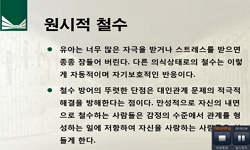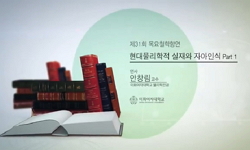본 논문은 디즈니 애니메이션에서 사용된 거울 이미지가 여성의 캐릭터를 설명하는 중요한 상징으로 사용되고 있음을 연구한 글이다. 본 연구에서 분석 대상으로 삼은 디즈니 애니메이션은...
http://chineseinput.net/에서 pinyin(병음)방식으로 중국어를 변환할 수 있습니다.
변환된 중국어를 복사하여 사용하시면 됩니다.
- 中文 을 입력하시려면 zhongwen을 입력하시고 space를누르시면됩니다.
- 北京 을 입력하시려면 beijing을 입력하시고 space를 누르시면 됩니다.
거울 이미지의 상징성을 통해 본 디즈니 애니메이션 속 여성 캐릭터 연구 = A Study On Female Characters In Disney Animation Through Mirror Images' Symbolism
한글로보기https://www.riss.kr/link?id=T14427883
- 저자
-
발행사항
서울 : 건국대학교 대학원, 2017
-
학위논문사항
학위논문(석사) -- 건국대학교 대학원 , 문화콘텐츠·커뮤니케이션(학과간)학과 문화콘텐츠학 전공 , 2017. 2
-
발행연도
2017
-
작성언어
한국어
- 주제어
-
발행국(도시)
서울
-
형태사항
88 ; 26 cm
-
일반주기명
지도교수: 이주은
- 소장기관
-
0
상세조회 -
0
다운로드
부가정보
국문 초록 (Abstract)
본 논문은 디즈니 애니메이션에서 사용된 거울 이미지가 여성의 캐릭터를 설명하는 중요한 상징으로 사용되고 있음을 연구한 글이다. 본 연구에서 분석 대상으로 삼은 디즈니 애니메이션은 디즈니 공주 프랜차이즈의 애니메이션 중 《백설공주와 일곱 난쟁이》, 《인어공주》, 《미녀와 야수》, 《뮬란》, 《라푼젤》로 총 5편이며, 각 애니메이션에서 등장하는 거울 이미지를 다룬다. 연구할 5편의 애니메이션은 주인공이 여성, 특히 각 왕국의 공주이며 여성과 떼려야 뗄 수 없는 소재인 거울과 접점을 갖는다.
먼저 일상에서 거울이 갖는 상징적 차원에서의 기원과 거울이 등장한 회화를 통하여 그것이 이미지로 어떻게 재현되었는지를 살펴보았다. 이후 신화나 동화에서 차용한 거울 이미지와 거울의 종교적인 상징을 살펴 본 후 각 애니메이션 스토리 진행에 있어 등장한 거울 앞에 서있는 인물의 행위나 위치하는 모습, 그리고 거울이 사용되는 상징적인 모습으로 거울 이미지를 분석하였다. 이후 다섯 편의 애니메이션에서 거울 이미지를 세 가지로 분류하였고, 칼 융의 개념적 틀을 이용하여 분석하였다.
첫째, 거울이 현실을 직시하는 도구로써 사용되고 있어 겉으로 보이는 절대적인 시각적 요소를 거울로 반영하고 있거나 거울상에 드러난 이미지가 현실을 직시할 기준을 만들어주며 인물들의 페르소나를 드러내는 수단으로 거울을 사용하고 있음을 알 수 있다. 둘째, 거울상에 드러난 나 자신이 아닌 타자를 통해 갖는 욕망이 재현되고 있음을 확인할 수 있었다. 나와 타자와의 관계에서 나르시시즘이 발생하고 여성이 가진 아름다움이나 젊음에 관한 집착과 함께 인간의 동기나 욕망, 하고자 하는 의지의 재현 방식이 거울 이미지로 드러나고 있음을 확인 할 수 있다. 셋째, 외적 상태가 기록되는 거울이 가진 매체의 특성이 아니라 매개로 사용하여 자신 스스로에게 대화를 거는 방법을 통해 내면이 이미지화 되어 바깥으로 드러나고 있음을 확인할 수 있다. 이는 여성 캐릭터가 자아의 의식을 형성하고 구체화하며 이를 통해 자아실현에 다다르고 있음을 볼 수 있으며 이러한 형태가 거울 이미지로 드러나고 있음을 확인 할 수 있다. 결과적으로 애니메이션 내의 캐릭터가 거울 이미지를 통해 현실에서 출발하여 타자와 관계를 맺고 이것이 자아실현의 단계에 이를 수 있다는 사실을 도출해낼 수 있었다.
본 연구는 기존 연구에서 논의되어 왔던 거울이라는 소재에서 디즈니 애니메이션으로까지 범위를 확장시켰다는 점에서 의의가 있다. 거울에 대한 상징성에 문화적인 해석이 더해진 이미지 분석을 통해 향후 다양한 갈래의 문화콘텐츠로 활용가능하리라 기대된다.
다국어 초록 (Multilingual Abstract)
This paper presents an investigation into mirror images in Disney animations as important symbols to explain female characters. The study analyzed five animations from Disney's princess franchise including 《Snow White and the Seven Dwarfs》, 《The...
This paper presents an investigation into mirror images in Disney animations as important symbols to explain female characters. The study analyzed five animations from Disney's princess franchise including 《Snow White and the Seven Dwarfs》, 《The Little Mermaid》, 《Beauty and the Beast》, 《Mulan》, and 《Tangled》 dealing with mirror images in each of them. In all of those five animations, women, who are princesses of their respective kingdoms, are main characters and have a contact point with the mirror, which is inevitably connected to ladies.
The study first examined the ways the mirror was reproduced in images by tracing the origin of its symbolism in daily life and describing the paintings in which it appeared. After delving into the images of the mirror borrowed from myths and fairy tales and the religious symbols of the mirror, the investigator analyzed its images according to the acts and positions of characters before a mirror and the symbolic uses of a mirror in the storytelling of each animation. The mirror images in the five animations were categorized into three groups and analyzed with the conceptual framework of Carl Jung.
First, the mirror was used as a tool for characters to look straight at the reality. It reflected the absolute visual elements on the outside, served as a criterion to look straight at the reality through its images, or offered a means of revealing the personas of characters. Second, the desire revealed through others in the mirror instead of oneself was reproduced. Narcissism appeared in one's relationships with others. The mirror images showed the reproduction methods of human motivation, desire, and willingness along with women's obsession with beauty and youth. Third, the female characters used the mirror as a mediation instead of its features as a medium to record external states, turning their insides into images and displaying them outside by having a conversation with themselves. They formed and specified their ego consciousness and thus reached the state of self-realization, which was revealed in mirror images. Those findings indicate that the characters of animations made a start with the reality and formed relationships with others through mirror images, thus reaching the stage of self-realization.
The present study is significant in that it expanded the research scope from the mirror discussed in previous studies to Disney animations. As cultural interpretations are added to the symbolism of the mirror in its image analysis, the results will help to promote its utilization as cultural content in more various genres.
목차 (Table of Contents)
- 제1장 서 론 1
- 제1절 연구배경 및 목적 1
- 제2절 연구대상 및 방법 4
- 제2장 거울 이미지의 상징적 원류 7
- 제1절 거울의 상징 : 재현의 공간 7
- 제1장 서 론 1
- 제1절 연구배경 및 목적 1
- 제2절 연구대상 및 방법 4
- 제2장 거울 이미지의 상징적 원류 7
- 제1절 거울의 상징 : 재현의 공간 7
- 제2절 신화와 동화 : 욕망의 투사 12
- 제3절 종교적 함의 : 자기 성찰과 반성 19
- 제3장 디즈니 애니메이션 속 거울 이미지의 재현 방식 22
- 제1절 《백설공주와 일곱 난쟁이》 22
- 제2절 《인어공주》 27
- 제3절 《미녀와 야수》 34
- 제4절 《뮬란》 43
- 제5절 《라푼젤》 52
- 제4장 거울 이미지로 구체화된 여성 자아 60
- 제1절 현실의 직시 60
- 제2절 타자에 대한 욕망 68
- 제3절 내면의 반영을 통한 자아실현 75
- 제5장 결 론 81
- 참고문헌 84
- ABSTRACT 87












